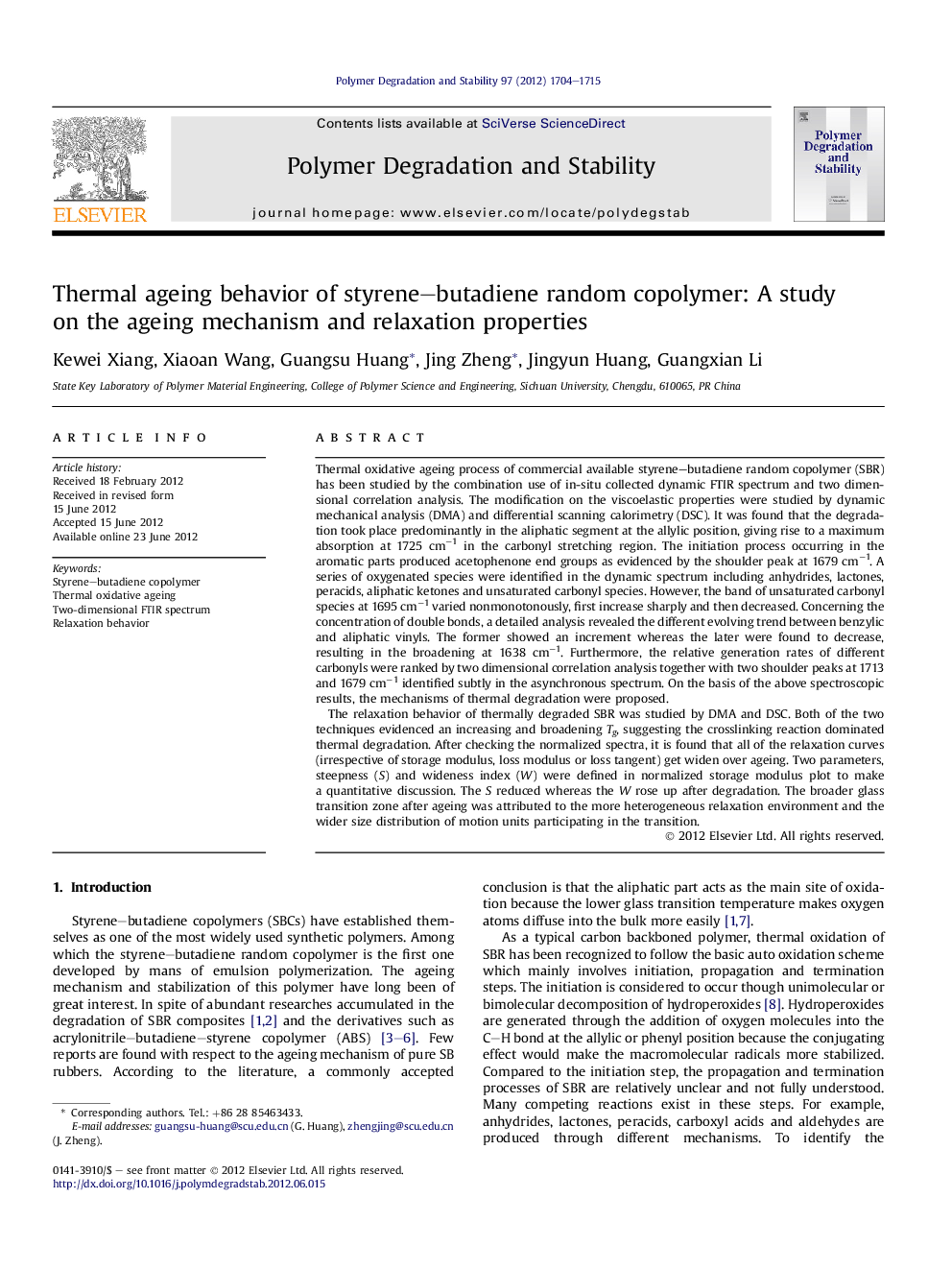| Article ID | Journal | Published Year | Pages | File Type |
|---|---|---|---|---|
| 5202740 | Polymer Degradation and Stability | 2012 | 12 Pages |
Abstract
The relaxation behavior of thermally degraded SBR was studied by DMA and DSC. Both of the two techniques evidenced an increasing and broadening Tg, suggesting the crosslinking reaction dominated thermal degradation. After checking the normalized spectra, it is found that all of the relaxation curves (irrespective of storage modulus, loss modulus or loss tangent) get widen over ageing. Two parameters, steepness (S) and wideness index (W) were defined in normalized storage modulus plot to make a quantitative discussion. The S reduced whereas the W rose up after degradation. The broader glass transition zone after ageing was attributed to the more heterogeneous relaxation environment and the wider size distribution of motion units participating in the transition.
Keywords
Related Topics
Physical Sciences and Engineering
Chemistry
Organic Chemistry
Authors
Kewei Xiang, Xiaoan Wang, Guangsu Huang, Jing Zheng, Jingyun Huang, Guangxian Li,
